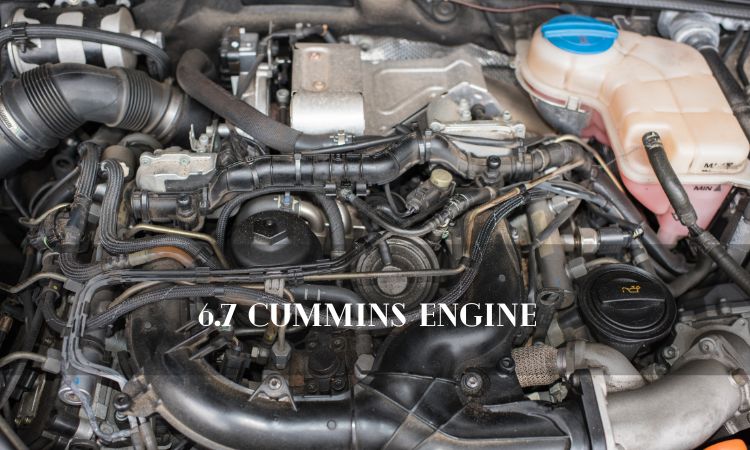Beginner-Friendly Guide to Diy Spark Plug Replacement
Learn how to easily replace spark plugs with this step-by-step guide for beginners. Spark plug replacement is a fundamental maintenance task that keeps your vehicle running smoothly and efficiently.
By following these simple instructions, you can save money on mechanic fees and gain confidence in your DIY skills. Changing your spark plugs is a cost-effective way to improve your car’s performance and fuel efficiency. This guide will walk you through the process, from gathering the necessary tools to completing the replacement in just a few easy steps.
With a little time and effort, you can tackle this task confidently and enjoy the benefits of a well-maintained engine. Let’s get started!
Benefits Of Diy Spark Plug Replacement
Easily replace spark plugs with a beginner-friendly guide. Save money on mechanic fees and gain a sense of accomplishment. DIY spark plug replacement also ensures smooth engine performance and fuel efficiency.
Saving Money
One of the key benefits of DIY spark plug replacement is the cost savings it offers. When you take your vehicle to a mechanic for spark plug replacement, you not only have to pay for the new spark plugs but also for the labor costs involved. By doing it yourself, you can save a significant amount of money that would otherwise be spent on mechanic fees.
Moreover, you have the freedom to choose the spark plugs that best fit your budget. Mechanics often charge a premium for the parts they use, whereas you can research and select affordable yet reliable options that suit your needs. With the money saved, you can invest in other essential car maintenance tasks or even treat yourself to a small reward!
Learning Experience
Embarking on a DIY spark plug replacement journey comes with a valuable learning experience. You don’t need to be an expert in automotive mechanics to successfully replace spark plugs in your vehicle. With the help of online tutorials, forums, and guides like this, you can gain hands-on experience and knowledge about your vehicle’s ignition system.
Not only will you understand the specific steps involved in spark plug replacement, but you will also have a better understanding of how your car’s engine works. This newfound knowledge can empower you to tackle other simple repairs and maintenance tasks in the future, saving you money and giving you a sense of accomplishment.
Signs That Spark Plugs Need Replacement
Before diving into a DIY spark plug replacement, it’s crucial to recognize the signs indicating that your spark plugs may need to be replaced. Ignoring these signs could lead to more serious issues down the road.
Engine Misfires
One of the most common indications of worn-out spark plugs is engine misfires. If you notice your vehicle stuttering or hesitating while driving, it could be a sign that the spark plugs are not igniting the fuel properly.
Rough Idle
Rough idle is another symptom that your spark plugs are in need of replacement. If your engine is running unevenly or vibrating excessively while idling, it could be due to faulty spark plugs.
Tools And Materials Needed
Before starting the DIY spark plug replacement, make sure you have the necessary tools and materials handy.
Spark Plug Socket
- Essential tool for removing and installing spark plugs
- Comes in various sizes to fit different spark plugs
Gap Gauge
- Used to measure and set the gap distance on spark plugs
- Ensures proper spark plug performance
Additionally, you will need the following:
- Replacement spark plugs: Ensure they are the correct type for your vehicle
- Ratchet wrench: For easy removal and installation of spark plugs
- Torque wrench: To tighten the spark plugs to the manufacturer’s specifications
- Screwdriver: To aid in removing any components blocking access to the spark plugs
- Safety goggles and gloves: Protect your eyes and hands during the replacement process
Having these tools and materials ready will make the spark plug replacement task smoother and ensure a successful outcome.

Credit: m.youtube.com
Step-by-step Diy Spark Plug Replacement Guide
Replacing your spark plugs is an important maintenance task that can improve your vehicle’s performance and fuel efficiency. It’s a simple job that even beginners can do with the right tools and a little patience. Follow this step-by-step guide to learn how to replace your spark plugs and keep your engine running smoothly.
Step 1: Prepare The Vehicle
The first step in replacing your spark plugs is to prepare your vehicle for the task. Here’s what you need to do:
- Park your vehicle on a flat surface and engage the parking brake.
- Allow the engine to cool down completely.
- Locate the spark plugs on your engine. Refer to your vehicle’s owner manual if you’re unsure where they are.
- Prepare the necessary tools and materials: a socket wrench, spark plug socket, spark plug gap tool, anti-seize compound, and new spark plugs.
Step 2: Remove And Replace Spark Plugs
Now that you’re ready, it’s time to remove the old spark plugs and install the new ones. Follow these steps:
- Start with one spark plug at a time. This helps prevent mix-ups.
- Remove the spark plug wire by firmly grasping the boot and twisting it in a clockwise motion.
- Using a socket wrench and spark plug socket, carefully loosen and remove the old spark plug by turning it counterclockwise. Be gentle to avoid stripping the threads.
- Inspect the old spark plug for any signs of damage, such as cracks or excessive wear. If necessary, consult a mechanic for further inspection.
- Check the gap on the new spark plug using a spark plug gap tool. Adjust the gap if needed to meet the manufacturer’s specifications.
- Apply a small amount of anti-seize compound to the spark plug threads to prevent seizing in the future.
- Carefully thread the new spark plug into the socket hole and tighten it by hand until snug. Then, use the socket wrench to give it a final turn, tightening it about 1/8 to 1/4 of a turn.
- Reattach the spark plug wire by pushing it firmly onto the spark plug until you hear a click or feel resistance.
- Repeat the process for each remaining spark plug.
And there you have it! By following this step-by-step guide, you can successfully replace your spark plugs and maintain the performance of your vehicle. Remember to consult your vehicle’s owner manual and be cautious when working with hot engine parts. With regular spark plug replacements, you’ll keep your engine running smoothly and efficiently.
Tips For Successful Diy Spark Plug Replacement
Are you a DIY enthusiast looking to replace your spark plugs for the first time? This beginner-friendly guide provides essential tips for a successful DIY spark plug replacement. Follow these guidelines to ensure a smooth process and keep your vehicle running smoothly.
Follow Manufacturer Guidelines
One of the most crucial tips for successful DIY spark plug replacement is to follow the manufacturer guidelines. Each vehicle has specific requirements for spark plug type, gap, torque, and installation procedure. Consult your vehicle’s manual or the manufacturer’s website to find the recommended spark plug specifications for your specific make and model.
Use Anti-seize Compound
When installing spark plugs, it’s important to use an anti-seize compound on the threads. This will prevent the plugs from seizing in the cylinder head, making future replacements much easier. Be sure to apply a small amount of anti-seize to the threads, taking care not to overdo it as excess compound can affect the torque specification.

Credit: www.amazon.com

Credit: www.reddit.com
Frequently Asked Questions For Beginner-friendly Guide To Diy Spark Plug Replacement
How Do You Change Spark Plugs For Dummies?
To change spark plugs, first, locate them on the engine. Use a spark plug socket and ratchet to remove the old spark plug. Inspect the new spark plug and adjust the gap if needed. Then, thread the new spark plug by hand and tighten it with the ratchet.
Remember to reconnect the spark plug wire. That’s it!
Is It Ok To Change Spark Plugs Yourself?
Yes, it is okay to change spark plugs yourself. Just ensure you follow the manufacturer’s guidelines for your vehicle.
Should You Disconnect Battery When Changing Spark Plugs?
Yes, it is recommended to disconnect the battery when changing spark plugs to prevent any electrical mishaps.
What Do You Put On Spark Plugs Before Installing?
Before installing spark plugs, it is recommended to apply dielectric grease or anti-seize compound.
Conclusion
DIY spark plug replacement is a cost-effective and relatively simple task for beginners. By following these step-by-step instructions, you can save time and money by performing this maintenance task yourself. Remember to prioritize safety, invest in quality spark plugs, and refer to your vehicle’s manual for specific details.
With practice and the right tools, you’ll gain confidence in your ability to maintain your vehicle and ensure its optimal performance. Happy DIYing!

